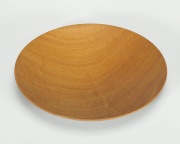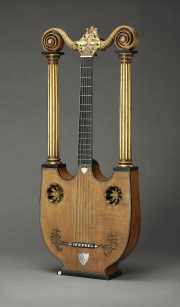Satinwood
Description
1) A silky, golden-color wood obtained from the deciduous satinwood tree, Chloroxylon swietenia, native to India, Madagascar, Sri Lanka and the East Indies. Satinwood timber has a fine interlocked grain with a uniform texture. Quarter sawn pieces have a narrow stripe figuring. The durable wood is used for furniture, veneer, cabinetry, turnery and small articles. Populations are in decline due to exploitation.
2) A lustrous, dark yellow wood from the evergreen satinwood tree, Zanthoxylum flavum (South America, the Caribbean islands, and Africa). This oily timber has a close, irregular grain, smells like coconut and polishes to a high gloss. This satinwood is used for similar applications as East Indian satinwood. This species is also threatened due to habitat loss and excess harveting.
Synonyms and Related Terms
1: Chloroxylon swietenia; Ceylon satinwood; flowered satinwood; East Indian satinwood
2: Zanthoxylum flavum; Brazilian satinwood; West Indian satinwood; tembetaria; concha satinwood; African satinwood; yellow sander; yellowood; yellow wood; yellow heart; yellow sandalwood
Risks
The wood is susceptible to insect attack, especially from termites, borers, and beetles.
Physical and Chemical Properties
1) Small deciduous trees, height = 18-25 m. Bark is yellowish, rough and corky. Leaves alternate, pinnately compound with 20-40 leaflets. White flowers are bisexual and small (5 mm long). Fruit appears as an ellipsoid capsule 2.5-3 cm. The wood has a pleasant fragrance when freshly cut. Essential oil from the leaves contains terpenes that repel mosquitos.
2) Small deciduous trees, height 6-9 m. The pinnately compound leaves have 5-11 leaflets. Small, yellow, fragrant flowers occur in clusters followed by green berries.
General info: Density = 50-60 ppcf
Working Properties
1) Wood is cream-colored darkening to brown with age. Texture is fine and even and remarkably lustrous. The strong, hard wood is difficult to work with hand tools and can blunt cutting tools.
Additional Images
Resources and Citations
- Plant use: [link]
- G.S.Brady, Materials Handbook, McGraw-Hill Book Co., New York, 1971 Comment: p. 381
- Ralph Mayer, A Dictionary of Art Terms and Techniques, Harper and Row Publishers, New York, 1969 (also 1945 printing)
- F. H. Titmuss, Commercial Timbers of the World, The Technical Press Ltd., London, 1965 Comment: 50-60 ppcf
- Michael McCann, Artist Beware, Watson-Guptill Publications, New York City, 1979
- George Savage, Art and Antique Restorer's Handbook, Rockliff Publishing Corp, London, 1954
- Dictionary of Building Preservation, Ward Bucher, ed., John Wiley & Sons, Inc., New York City, 1996
- Random House, Webster's Encyclopedic Unabridged Dictionary of the English Language, Grammercy Book, New York, 1997
- The American Heritage Dictionary or Encarta, via Microsoft Bookshelf 98, Microsoft Corp., 1998
- CRC Handbook of Chemistry and Physics, Robert Weast (ed.), CRC Press, Boca Raton, Florida, v. 61, 1980 Comment: density=59 ppcf (0.95 g/cm3)





